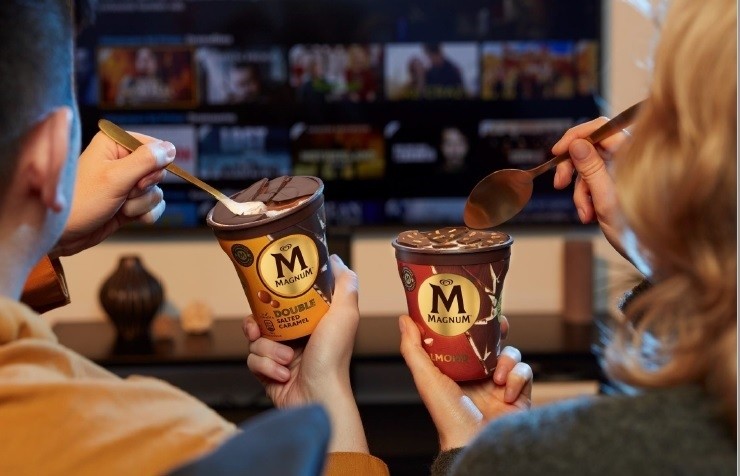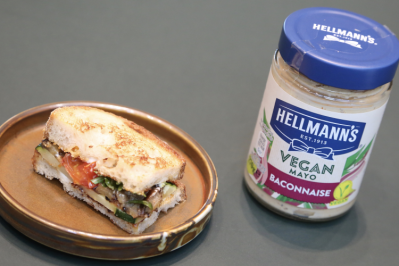Unilever outlines 3-prong plan to capture market share in growing ice cream segment

Growing at a compound annual rate of 2.6% between 2019 and 2021 and seizing approximately 20% share of the ice cream market in the period “despite the ravages of COVID,” Unilever’s €7bn ice cream business already holds a significant lead over its next closest competitor, which has 10% of market share, Matt Close, president of Unilever’s ice cream division, touted during the company’s recent investor day.
He added that the company intends to significantly expand that lead in the coming years by growing competitively ahead of the market, which Euromonitor predicts will grow at a compound annual growth rate of 4% through 2025 – faster than the 3% growth rate it saw between 2019 and 2021.
“We’re well positioned to grow based on the latest consumer trends we see,” Close said. “Consumers expect ice cream to taste great, they’re looking for indulgent experiences, they’re looking for products that transform their mood. And now, whatever the occasion – be it outdoors in the afternoon, whether it’s sharing a moment with friends at home – we have brands that can really deliver against those trends.”
Unilever also is well positioned to deliver against increased demand for products that are healthier for people and the planet thanks to innovations that are plant-based, low-carb and low-sugar, Close said.
As the economy continues to tighten and consumers increasingly seek products with a strong value proposition, Close noted that the company’s ice cream portfolio can deliver even in a recession by offering “accessible, affordable treats that will lift their mood” and “take them out of the difficult situations they find themselves in.”
Market expertise, innovation capabilities will fuel premiumization
Beyond checking off emerging trends, Unilever plans to strategically build its ice cream business in 2023 and beyond on three core pillars: premiumization, a greater presence in emerging markets and expanding e-commerce and out of home sales.
In terms of premium offerings, Unilever already has a strong presence with Magnum and Ben & Jerry’s, which currently represent about 35-45% of its share of ice cream sales, but which it plans to expand to more than 50% by 2025, Close said.
“These are proven brands with a strong track record of growth and we’ve invested ahead of the curve in capacity and in marketing expertise and innovation capability,” he said.
For example, he noted, last year the company launched Ben & Jerry’s Sundaes, which “bring a twist to the pints experience” by adding a creamy whipped ice cream topping with chunks and swirls on top of another layer of ice cream, which is made with Fairtrade ingredients. The new line up of four flavors also allows the brand to access a slightly different audience than to which Ben & Jerry’s traditionally appeals, Close added.
New premium offerings within other brands include the recent launches of Cornetto Soft, which Close says “really demonstrates our superior formulation capacity and being able to bring that soft serve ice cream experience into the home fresh from the freezer.”
Unilever’s ability to offer more premium innovations is based in the deep knowledge of its more than 500 ice cream scientists who know more about microstructure control than anyone else, according to Close, and the company’s more than 100 patents around forming, assembly, packaging, systems and master blending.
A ‘clear codified model’ for expanding in emerging markets
The second pillar of Unilever’s strategy for expanding its lead in ice cream is to grow its footprint in emerging markets, which currently account for just over 25% of the company’s business, but which Unilever hopes to expand to more than 40% by 2025.
To do this, Unilever has a “clear codified model proven in multiple markets” that includes leaning on premium offerings to drive margins while offering consumers products at every price point, including market entry, so that it can compete directly with small treats like snack bars and soft drinks.
“That repeatable model is underpinned in the emerging markets by a low-cost manufacturing base and a deep expertise in frozen route to market,” Close added.
Ice cream on demand – anywhere at anytime
The third pillar of Unilever’s growth plan is to enhance its frozen routes to market expertise through digitization of its key channels, but especially out of home and e-commerce.
“In out of home, we work with more than 3 million shopkeepers. We already have proof of concept that using digital capabilities, like image capturing into automatic ordering and replenishment, drives their growth and improves our service to those shopkeepers,” Close said.
He added over the strategic period, “we’ll invest heavily in digitalizing the relationship we have with them for growth and efficiency.”
Unilever also plans to expand its “ice cream NOW” initiative, which originally launched in 2017 with one freezer in a Deliveroo store in Amsterdam and accounted for €400m in 2022, to €1b by 2025. To do this, the company will expand offerings through meal delivery, quick service and its strategic partners, Close said.
While each of these pillars include aggressive targets, Close said he is confident Unilever can meet its ambitious goals because they each are “underpinned by more domain expertise,” that will allow it to seize opportunities across the value chain.



















